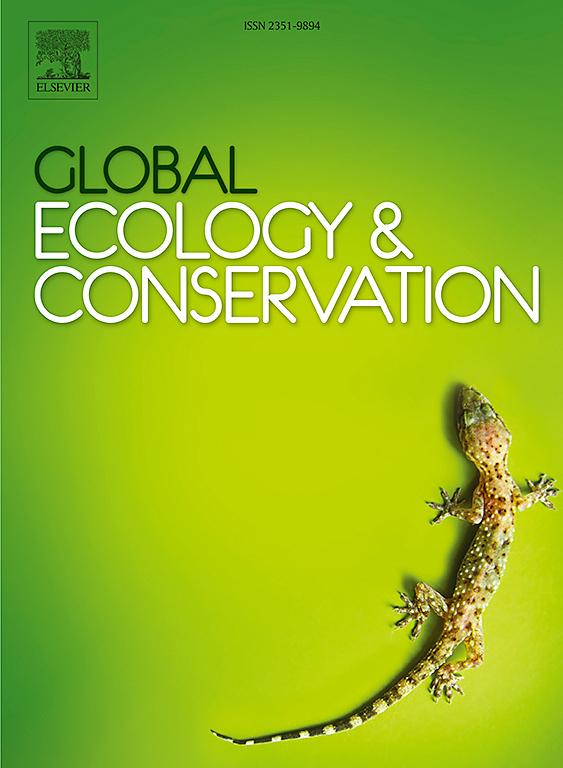Water table reduction shapes soil nematode communities in Zoige peatlands
IF 3.4
2区 环境科学与生态学
Q1 BIODIVERSITY CONSERVATION
引用次数: 0
Abstract
The water table of the Zoige peatland has been reduced in recent decades due to climate change and human activities. However, as the biological indicators of soil environment, how the response of soil nematode communities to water table reduction was no clear. In this study, we conducted an in situ field sampling at low, intermediate, and high water table levels (ranging from −72 cm to −18 cm) in the Zoige peatland. The results showed that water table reduction increased the density of bacterivores and decreased the density of fungivores. Nematode diversity also decreased with water table reduction. The nematode channel ratio increased significantly after the water table reduction, indicating that the soil food web was transformed from a fungal-based channel (low decomposition efficiency) to a bacterial-based energy channel (high decomposition efficiency), especially in deep soil (with a maximum increase of 86 %). Structural equation modeling indicated that soil water table reduction had a negative effect on soil water content, thus increasing the abundance of fungivores, bacterivores and herbivores. Soil water table reduction had a positive effect on soil pH, thus increasing bacterivores, but decreasing fungivores. Our results provide substantial evidence for the degradation of Zoige peatland due to water table reduction caused by climate change and anthropogenic disturbance in the future.
若尔盖泥炭地地下水位降低影响土壤线虫群落
近几十年来,由于气候变化和人类活动的影响,若尔盖泥炭地的地下水位有所下降。然而,作为土壤环境的生物指标,土壤线虫群落对地下水位降低的响应尚不清楚。在这项研究中,我们在若尔盖泥炭地的低、中、高地下水位(范围从−72 cm到−18 cm)进行了现场采样。结果表明,地下水位降低使食菌菌密度增加,真菌密度降低。线虫多样性也随着地下水位的降低而减少。地下水位降低后,线虫通道比例显著增加,表明土壤食物网由真菌通道(分解效率低)向细菌通道(分解效率高)转变,特别是在深层土壤中,增幅最大可达86 %。结构方程模型表明,土壤地下水位降低对土壤含水量有负面影响,从而增加了食真菌、细菌和食草动物的丰度。土壤地下水位降低对土壤pH值有积极影响,增加了细菌食用量,减少了真菌食用量。研究结果为若尔盖泥炭地未来因气候变化和人为干扰导致的地下水位下降而退化提供了有力证据。
本文章由计算机程序翻译,如有差异,请以英文原文为准。
求助全文
约1分钟内获得全文
求助全文
来源期刊

Global Ecology and Conservation
Agricultural and Biological Sciences-Ecology, Evolution, Behavior and Systematics
CiteScore
8.10
自引率
5.00%
发文量
346
审稿时长
83 days
期刊介绍:
Global Ecology and Conservation is a peer-reviewed, open-access journal covering all sub-disciplines of ecological and conservation science: from theory to practice, from molecules to ecosystems, from regional to global. The fields covered include: organismal, population, community, and ecosystem ecology; physiological, evolutionary, and behavioral ecology; and conservation science.
 求助内容:
求助内容: 应助结果提醒方式:
应助结果提醒方式:


